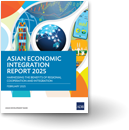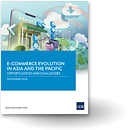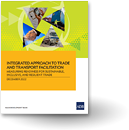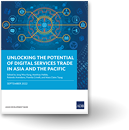FDI technology spillovers and spatial diffusion in the People’s Republic of China
Data from the National Bureau of Statistics (NBS) of the People’s Republic of China (PRC) reveals that, over time and across counties, the Total Factor Productivity (TFP) of domestic (PRC) firms are positively correlated. While the externalities arising from Foreign Direct Investment (FDI) penetration have long received attention from both economists and policy makers, little is known about the extent to which regional penetration of FDI affects the aggregate productivity of local private firms in a spatial dimension (i.e. across an entire region). It is in this context we ask if domestic private firms benefit from FDI presence in their local and neighboring regions.
TFP for Domestic Private Firms are Positively Correlated across Counties
In an up and coming AIEN working paper, we plot individual counties’ TFP against that of neighboring regions and find a significant positive correlation. Moreover, it is apparent that over time, these data reveal a clustering pattern of domestic firms’ TFP in the PRC. We further investigate the role of FDI in this process.
FDI Technology Spillovers and Spatial Diffusion
To capture the features shown by the data, the model we employed in our research assumes that changes in FDI presence, measured as FDI employment share and FDI sales income share in a specific region, will generate a direct impact on the region itself (i.e. intra-regional impact) and potentially an indirect impact on other regions (i.e. inter-regional impact), from the time of FDI penetration and extending into the indefinite future.
The results of our research indicate the following:
- FDI presence (measured as employment share) in a county will have a negative effect on the productivity performance of domestic private firms in the same region.
- Domestic private firms enjoy positive FDI spillovers from inter-regional technology diffusion by way of labor market channels. These inter-regional spillovers could arise from higher-order neighboring regions i.e. neighbors of neighbors.
- In the long run, the positive inter-regional spillovers outweigh the negative intra-regional spillovers, bestowing a beneficiary total effect on domestic firms through labor market channels.
- FDI spillovers measured as sales income share, however, are negative in both intra-regional and inter-regional dimensions.
Policy Implications
In order to attract FDI, and more importantly, to obtain advanced technology the PRC has been providing an incentive package for Multi-National Corporations (MNCs) since the early 1990s. Strategies have included tax holidays or reductions, job-creation subsidies, preferential loans for FDI, and the construction of industrial facilities (where land and infrastructure are subsidized) by central and local governments. Many local governments compete with neighboring ones using such strategies, resulting in severe tax competition and a ‘race to the top / race to the bottom’ problem.
We find that domestic firms benefit from FDI presence in neighboring regions, and that the impact of intra-regional FDI is largely negative. Consequently, individual local governments, should re-think tax competition as a strategy for attracting FDI, as the benefits derived from doing so may not be as large as commonly believed. A better strategy for local governments is to cooperate with one another to provide a better environment for both MNCs and domestic firms. These could include providing better infrastructure for transportation across regions, lowering regional tariffs for capital and labor, and offering MNCs and domestic firms with equal tax treatments. To this end, coordination among local governments would be of utmost importance.
As technology spillovers are only one of the many consequences of FDI, further research may want to investigate the regional impact of FDI presence in other dimensions, like resource allocation efficiency and local capital accumulation.




